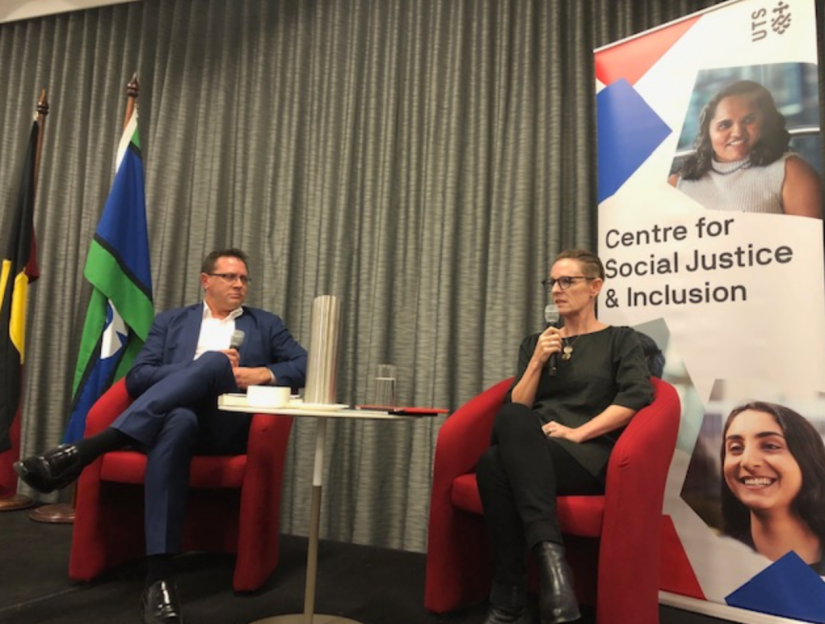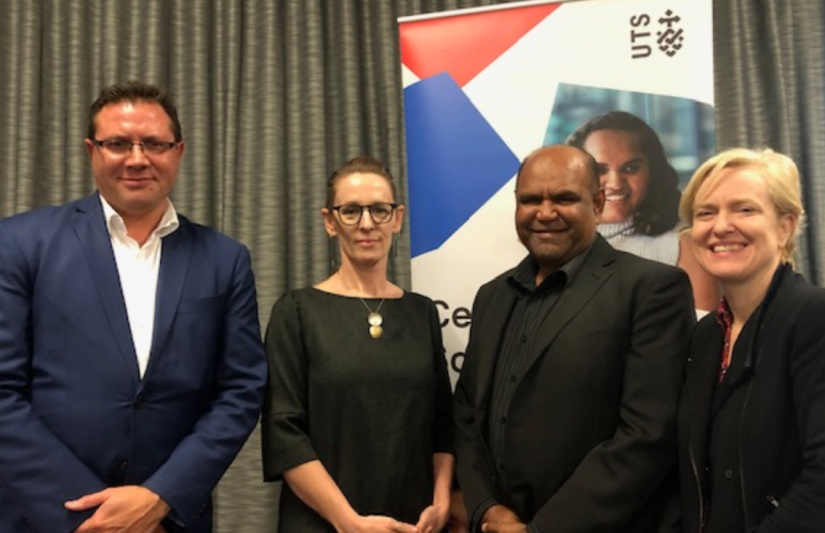Reconciliation Week: In conversation with Professor Sarah Maddison and Professor Lindon Coombes
by Alison Whittaker

Professor Lindon Coombes and Professor Sarah Maddison
What do we do with the ‘settler’ in settler-Indigenous relations? This is the question that Professor Lindon Coombes (Jumbunna Institute) and Professor Sarah Maddison (University of Melbourne) grappled with as the cool change finally swept across Warrang Sydney in late May. In front of a packed audience, the two discussed how to meaningfully restructure relationships between settlers and First Nations — reaching consensus in ‘adding black and stirring is not enough.’
The discussion centred around Maddison’s book The Colonial Fantasy: Why White Australia Can’t Solve Black Problems. Maddison opened with a reading from the book’s first chapter — laying out the timeline and theory for her titular concept. Where the aim of settler colonies like Australia is to supplant, diminish and eliminate Indigenous nations, and never leave, there is an urgency for settlers to ‘resolve’ their crisis of conscience by ‘solving’ Indigenous people. They never do. Why? As Rosalie Kunoth-Monks and Tarneen Onus-Williams were cited as saying in the Q&A that followed — Indigenous people are not the problem.
Maddison and Coombes, both of political training and experience, were drawn to discussing the recent surprising Federal election outcome. They narrowed in on the promise and pitfalls of settler electoral politics. Have the cycles of refresh and hope pledged in changes of government actually done good for Indigenous nations and communities? Perhaps not, they concluded, with substantive discussions of treaty only now reviving in state and federal governments after treaty and federal land rights seemed so assured in the Hawke era.
Where to, then, for non-Indigenous people? Coombes proposed a burgeoning in blak thinking about nation-building and self-determination, highly localised and away from the supervision and endorsement of government and non-government bodies. Maddison suggested thinking of forthcoming treaty discussions in the context of relationships. Settlers think of treaty as ending a relationship, whereas First Nations who enter into treaty think of it as formalising and establishing the terms of that relationship. One thing settlers could do, she suggested, was think and act on that relationship.
Coombes posed the question to Maddison and the audience — people who, by virtue of attending this event, were engaged in Indigenous Affairs — how do we have ‘tough conversations’ with people who think they are on the side of Indigenous people? It needs to happen, and it needs to continue happening for as long as colonisation does. Because Australia is an enduring settler colony, we know that tough conversations must be more concerned with relationship than resolution.

Professor Lindon Coombes, Professor Sarah Maddsion, Allan Murray and Verity Firth

